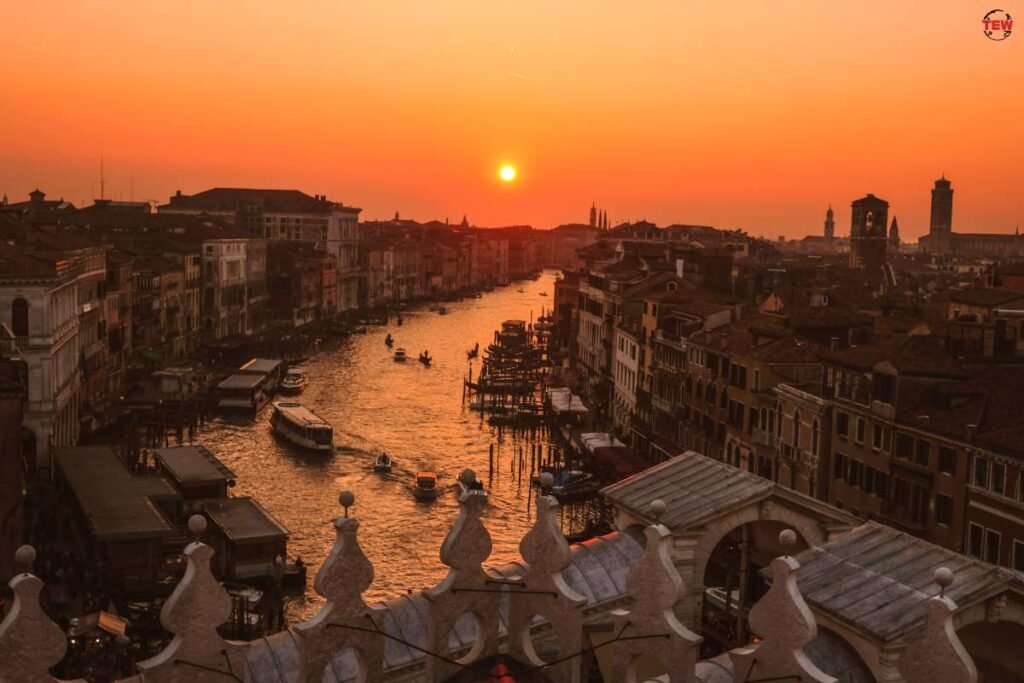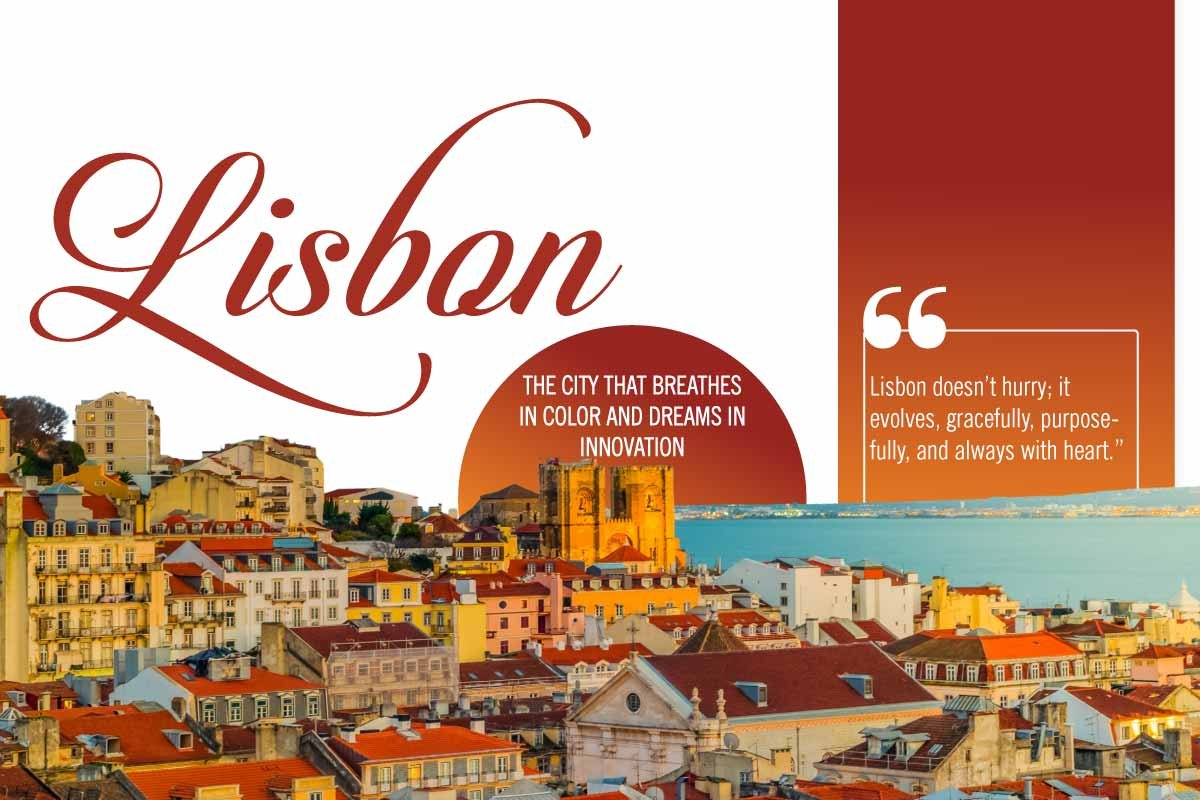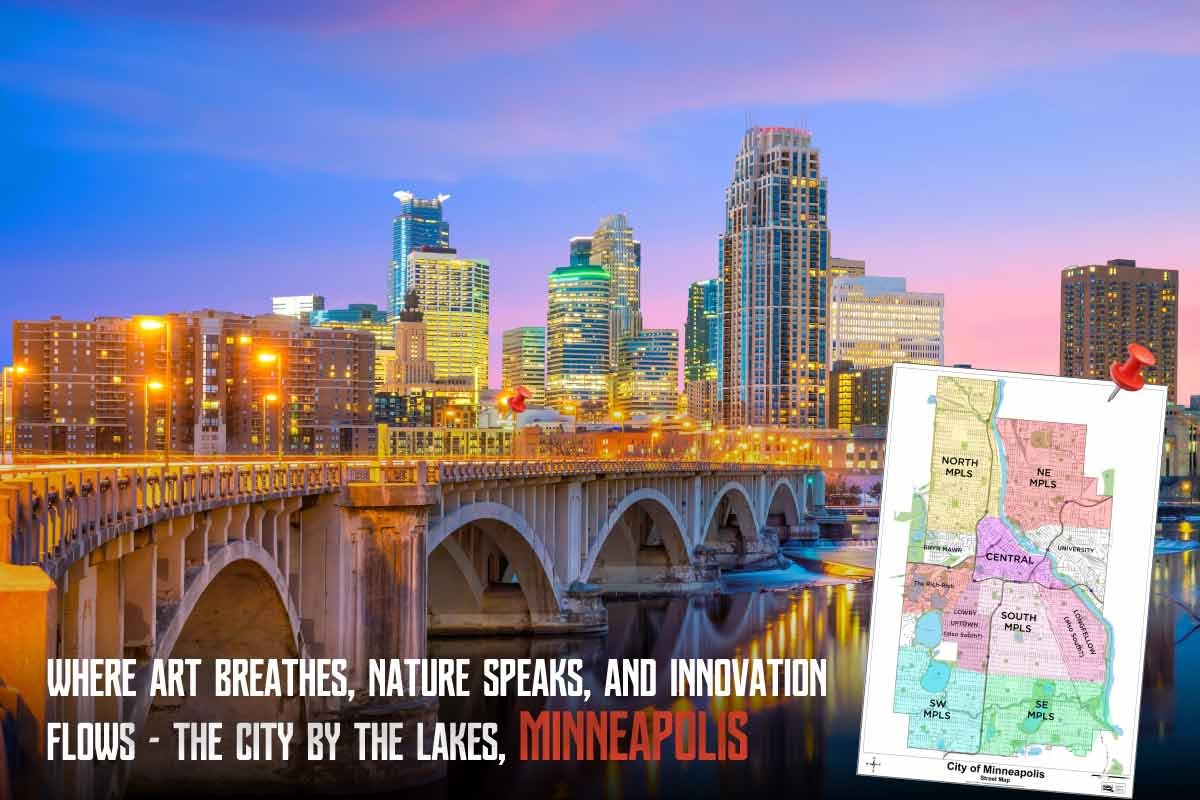Northern Italy’s provincia (province) of Venezia and regione (region) of Veneto share the same name: Venice, an important seaport city. It was an island city and the capital of a maritime republic. The city has retained a unique place in the Western imagination since the fall of the Venetian Republic in 1797 and has been constantly depicted in prose and poetry.
A suitable role for a city whose participation in international trade allowed it to maintain its economic and political independence for a thousand years, the City is now acknowledged as a part of the cultural and architectural heritage of all humanity. Seafood is a popular ingredient in Venetian cuisine, but it also includes polenta, rice from the mainland, game, and veggies from the gardens of the lagoon’s islands.
The City is not known for its distinctive cuisine; rather, it combines local traditions with inspiration from long-ago encounters with other cultures. Visitors who want to experience the city’s famed art and architecture frequently travel to Venice. The city receives up to 60,000 visitors each day. Between 22 million and 30 million tourists are predicted to visit each year.
Geographical Importance –
Venice is situated on alluvial silt that flowed into the Adriatic Sea from the Veneto plain’s rivers running eastward from the Alps. The silt was stretched into long banks, or lidi, by the action of the current flowing around the Adriatic Sea’s head from east to west.
Subsidence, the steady sinking of Venice’s surface, has contributed to the seasonal Acqua alta “high water”, when a significant portion of the city’s surface is occasionally flooded during high tide, along with other factors. Those who sought refuge from barbarian invasions on the sandy islands of Torcello, Iesolo, and Malamocco in this coastal lagoon learned how to build by driving sparse piles of alder tree trunks, a wood renowned for its water resistance, into the mud and sand until they reached a much harder layer of compressed clay. On top of the piles, plates of Istrian limestone supported the building foundations.
The city is frequently in danger from flood surges coming in from the Adriatic during the months of autumn and early spring. All of the major rivers that flowed into the lagoon were diverted by the Venetians in order to prevent sediment from filling the area around the city, in order to defend themselves against land-based attacks six hundred years ago.
The City has a mid-latitude, four-season humid subtropical climate, with mild, damp winters and warm, humid summers, according to the Köppen climatic classification. The 24-hour average temperature is 3.3 °C i.e. 37.9 °F in January and 23 °C i.e. 73.4 °F in July. Snow is not uncommon between late November and early March. Annual precipitation averages 748 millimeters i.e., 29.4 in and is distributed fairly evenly throughout the year.
Etymology of Venice –
The metropolis consists of no historical records to be sure about the existence of the city in ancient times or with ancient evidence although the city is much recognized for its beauty and artistic nature. The only evidence gained from some locations of The City gives proof to historians accepting the existence of The City consisting of refugees from nearby cities. On the islands in the ancient marshy lagoons, there were fishermen known as incolae lacunae, according to certain late Roman sources which means “lagoon dwellers”. The first church, San Giacomo’s, was dedicated to the islet of Rialto i.e. Rivoalto, “High Shore”, and is considered to have been the traditional founding event.
The Italian thalassocracy known as Repubblica marinara, which included seven other cities in addition to The City, rose to prominence between the ninth and the twelfth centuries. The most significant of these were Genoa, Pisa, and Amalfi, while the least well-known were Ragusa, Ancona, Gaeta, and Noli.

Venetian naval and commercial might was virtually impregnable due to its unique strategic location at the head of the Adriatic. The city flourished as a trading hub between Western Europe and the rest of the globe once the Dalmatian coast was cleared of pirates, especially with the Byzantine Empire and Asia, where its naval guarded sea lanes against piracy.
In the 15th century, the newly developed German printing press spread quickly throughout Europe, and The City was among the first to embrace it. Aldus Manutius, the world’s foremost printer, created paperback volumes that could be carried in a saddlebag, and Venice by 1482 had become the center of the printing industry.
Towards the end of the Renaissance, Venice started to lose its status as a hub of international trade as Portugal replaced Spain as Europe’s main trading middleman with the East, undermining the very foundation of Venice’s enormous wealth. In the Italian Wars, France and Spain fought for control of Italy, reducing its political influence. However, The City continued to be a large agricultural exporter and a manufacturing hub up until the middle of the 18th century.
Heritage of Venice –
Venice is known for its canals and water but that for which It is famous all over the globe is its Culture. The City has had a longstanding image as a debaucherous carnival city where anything goes. It’s simple to picture folks who live in such decadence as being equally corrupt and colorful.
The conventional description of the Venetians is that they are cunning and practical. Perhaps as a result of Shakespeare’s Merchant of Venice, the Venetians are said to have a knack for commerce and riches. However, this city’s main paradox is that its pragmatic nature coexists with a remarkably rich artistic and historical background. With its blend of Byzantine-inspired architecture and Italian Renaissance art, Venice is the most instantly recognizable city thanks to its historical ties to the East in both trade and conflict.
Literature
Venice has its own stories and literature from ancient times to the new age. Many artists born in Venice got featured and named due to the versatility of Venice in art and culture. For many years, Venice served as a creative hub for writers, playwrights, and poets as well as a forerunner in the advancement of printing and publishing technology.
In the Middle Ages, Marco Polo and later, Giacomo Casanova, were two of the most renowned writers from Venice. Merchant Polo from 1254–1324 traveled to the Orient. His Il Milione book series, which he co-authored with Rustichello da Pisa, advanced his understanding of the regions east of Europe, including the Middle East, China, Japan, and Russia. Giacomo Casanova from 1725–1798, a prolific author and explorer, is most known for his autobiography, Histoire De Ma Vie which means Story of My Life, which connects his colorful way of life to the city of Venice.
Painting
Venice was a significant center of art and created a distinctive style known as the Venetian School. This was notably true during the Middle Ages, the Renaissance, and the Baroque periods. Along with Florence and Rome, Venice emerged as one of Europe’s major centers of art during the Middle Ages and the Renaissance, and many affluent Venetians supported the arts. At the time, Venice was a wealthy Maritime Republic in possession of a sizable maritime and trading empire.
During the early Renaissance, Venice was the birthplace of the canvas, the popular painting surface. These early paintings were typically unfinished. With Tiepolo’s ornamental paintings and Canaletto’s and Guardi’s panoramic views, Venetian painting experienced a renaissance in the 18th century.
Festivals
Venetian Masks are most popular in the metropolis and in the surrounding. Annually the metropolis holds the Carnival of Venice which lasts up to two weeks and ends on a Shrove Tuesday. The oldest film festival in the world is celebrated in Venice. Established by Giuseppe Volpi di Misurata in 1932 as Esposizione Internazionale d’Arte Cinematografica. Since then the festival is celebrated every year in Venice namely as The Venice Film Festival. The festival is held during August or early September on the island of Lido.
Music
The development of Italian music has been significantly influenced by the Italian city of Venice. The medieval Republic of Venice, the Venetian state, was frequently referred to as the “Republic of Music,” and a 17th-century unnamed Frenchman is credited with saying, “In every home, someone is singing or playing a musical instrument. Music may be heard everywhere.”
Taste of Venice –
Venetian food is known for its seafood, but it also has polenta, rice from the mainland, game, and produce from the lagoon’s islands’ gardens. Venice is not renowned for having a unique cuisine of its own; instead, it combines regional customs with influences from long-ago interactions with foreign cultures. Sarde in saór i.e. sardines are marinated to keep them fresh for long voyages, bisàto which is a marinated eel, Risi e Bisi i.e. rice, peas, and unsmoked bacon, fegato alla veneziana which is a veal liver cooked in the style of Venice, risotto col néro de sépe i.e. risotto with cuttlefish blackened by their own ink, cichéti.
Additionally, Venice is well-known for the golden, oval-shaped cookies known as broccoli, as well as for other kinds of confections, including pan del pescaór i.e.bread of the fisherman; cookies with almonds and pistachio nuts; cookies with fried Venetian cream; or the bussolài i.e. butter biscuits and shortbread made in the shape of a ring or an “S” from the island of Burano; the galàni or cró. The popular Veneto region dessert tiramisù is generally believed to have originated in Treviso in the 1970s
Exploring the streets of Venice –
Tourists who want to view its renowned art and architecture frequently travel to Venice. The city receives up to 60,000 visitors per day as per the estimate for 2017. Between 22 million and 30 million tourists are predicted to visit each year. Overcrowding and environmental issues are brought on by this “overtourism” for Venice’s ecosystem. In 2017, UNESCO was considering including Venice on its “In-Danger” list, which also includes ancient remains in nations that are embroiled in conflict.

The organization is in favor of restricting the number of cruise ships as well as putting up a plan for more environmentally friendly tourism in order to lessen the number of visitors who are bringing about irreversible changes in Venice.
The Doge’s Palace, the Grand Canal, the Piazza San Marco, and St. Mark’s Basilica are just a few of the many attractions in Venice today. Thousands of actors, reviewers, celebrities, and others associated with the film business frequent the Lido di Venezia, another well-known luxury destination on the world scene. The cruise industry is also quite important to the city. According to a survey from 2015, the Cruise Venice Committee calculated that cruise ship visitors spend more than 150 million euros per year in the city. Some people view Venice as a tourist trap, while others see it as a “living museum.”
The Doge’s Palace
The Doge’s Palace is a stunning landmark in Venice. The Venetian Gothic palace in St. Mark’s Square has a direct view of the Grand Canal. It was formerly the home of the Doge of Venice, who served as the head of state of the former Republic. It is currently a museum operated by the Fondazione Musei Civici di Venezia.
The Grand Canal
The magnificent Grand Canal must be experienced during a trip to Venice. The river, which is the major waterway in the city, is flanked by beautiful, century-old structures. Despite the canal’s four bridges, both inhabitants and visitors still favor taking boats. A romantic gondola ride around the canal while being serenaded by gondoliers is one of the best things to do in Venice.
St. Mark’s Basilica
The Saint Mark’s Basilica is not difficult to find because of its intricately designed exterior. One of Venice’s most recognizable landmarks is the church, which is situated on the Piazza San Marco’s eastern side. It rose to fame as one of the finest examples of Italo-Byzantine architecture due to its spectacular beauty. If you want to avoid crowds, the best time to plan your trip in December or January. Additionally, there are rigorous dress regulations in place here.
The economy of Venice –
The economy of Venice totally depends on the tourism sector of Venice. Since the 18th century, when Venice with its stunning cityscape, singularity, and rich musical and artistic cultural heritage was a stop on the Grand Tour, tourism has played a significant role in the Venetian economy. The “rich and famous” frequented opulent institutions like the Danieli Hotel and the Caffè Florian when visiting Venice in the 19th century, and the city remained trendy into the early 20th century.
Throughout history, Venice’s economy has undergone changes. Although there is little information regarding the early years, it is likely that the slave trade, which involved the capture of slaves in central Europe and their sale to North Africa and the Levant, played a significant role in the city’s development. Venice would have had a clear advantage as a middleman in this crucial commerce given its location at the head of the Adriatic and just south of where the Brenner Pass crosses the Alps. The city also rose to become one of the wealthiest in Europe and a leader in both political and economic matters.
Sports and Education of Venice –
Sports
Though sports have less importance in Venice. Yet there exist some special games and sports in the metropolis. The most renowned game in the metropolis is Voga alla Veneta commonly referred to as Voga Veneta. Venetian rowing, a method developed in the Venetian Lagoon, is uncommon in that one or more rowers row while standing and gazing forward. Voga alla Veneta is still practiced today by Venetians for recreation and sport as well as by gondoliers ferrying tourists throughout the city. Regata races are numerous and take place all year round.
The “Regata Storica” day, which takes place on the first Sunday of September every year, is the season’s grand finale for rowers. The city’s primary football team, Venezia F.C., was established in 1907 and competes in Serie B at the moment. One of the oldest sporting grounds in Italy is the Stadio Pier Luigi Penzo, which is located in Sant’Elena. Reyer Venezia, the local basketball team, was first established in 1872 as the gymnastics team Società Sportiva Costantino Reyer and as a basketball team in 1907.
Currently, Reyer competes in the Lega Basket Serie A. In 1942, 1943, and 2017, the men’s team won the Italian championship. Their venue is the Mestre-based Palasport Giuseppe Taliercio. The club’s president and the city’s mayor are both Luigi Brugnaro.
Education
Venice counts as the international center for higher education. The metropolis hosts the oldest university Ca’Foscari University of Venice established in 1868, also some other universities include; Universita luav di Venezia, founded in 1926, The Venice International University founded in 1995 situated on the island of San Servolo and on the island of Lido di Venezia sits the European Inter-University Centre for Human Rights and Democratization.

Other universities in Venice include the Accademia di Belle Arti i.e. Academy of Fine Arts, founded in 1750, whose first president was Giovanni Battista Piazzetta, and the Benedetto Marcello Conservatory of Music, founded in 1876 as a high school, and musical society, later changing its name to Liceo Musicale in 1915, and later becoming the State Conservatory of Music under the direction of Gian Francesco Malipiero in 1940.


















